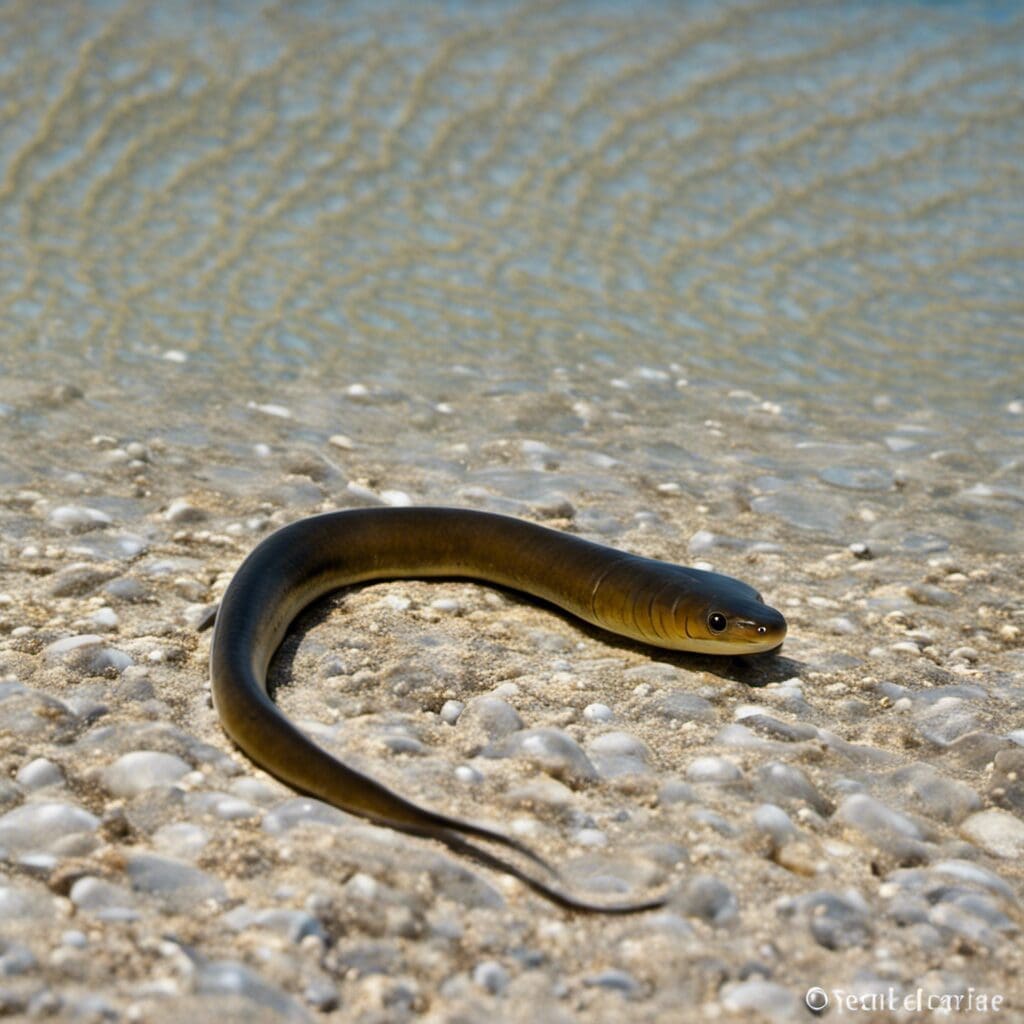Introduction
Species Name: American Eel (Anguilla rostrata)
Family Name: Anguillidae
Conservation Status
Current Status: Least Concern (IUCN)
Conservation Efforts: Monitoring populations, habitat restorations
Statistics
| Average | Range | |
|---|---|---|
| Length | 60 cm | 40 – 150 cm |
| Weight | 4 kg | 1 – 8 kg |
| Life Span | Average 15 years, with some reaching up to 25 years | |
Distribution
Regions/Countries: North America, from Greenland and Labrador in the north to Venezuela in the south.
Migration Patterns: Sargasso Sea for breeding, return to freshwater for growth.
Habitats
Water type: Both Freshwater and Saltwater
Depth Range: Up to 400 m
Temperature Range: 0 – 30 °C
When and Where to See
Seasonal patterns: Migrate to the Sargasso Sea to spawn in the spring
Time of day: More active during the night
Best Fishing Locations
- St. Lawrence River, Canada
- Chesapeake Bay, USA
- Lake Erie, USA/Canada
- Hudson River, USA
- Mississippi River, USA
- Lake Ontario, USA/Canada
- Cape Fear River, USA
- Columbia River, USA
- Delaware River, USA
- Tennessee River, USA
General Tips: Eels are often found hiding in mud, rocks, and vegetation.
How to Catch
Preferred bait or lures: Earthworms, small fishes, clams.
Fishing Techniques: Bottom fishing, drift fishing.
Best Time: Night time, especially after rains.
Identification Guide
Physical Characteristics: Long and slender body, green to yellow-brown in color, small pectoral fins.
Comparison with Similar Species: Distinguished from the European eel by its longer dorsal fin and smaller eye size.
Culinary
How to Cook: Commonly smoked, grilled, or used in sushi.
Taste Profile: Rich, sweet, and firm though tender.
Nutritional Information: High in protein and omega-3 fatty acids.
Additional Information
Behavior: Feeds on a variety of organisms, including insects, smaller fish, and carrion. Uses its keen sense of smell to locate food.
Predators and Threats: Predated by larger fish and birds. Overfishing and habitat loss are human-induced threats.
Cultural/ Historical Significance: In Native American cultures, eels were often considered sacred.
References and Further Reading
For more information, consider these sources:
- FishBase
- IUCN RedList
Please remember to check the current regulations before going fishing for American Eels

